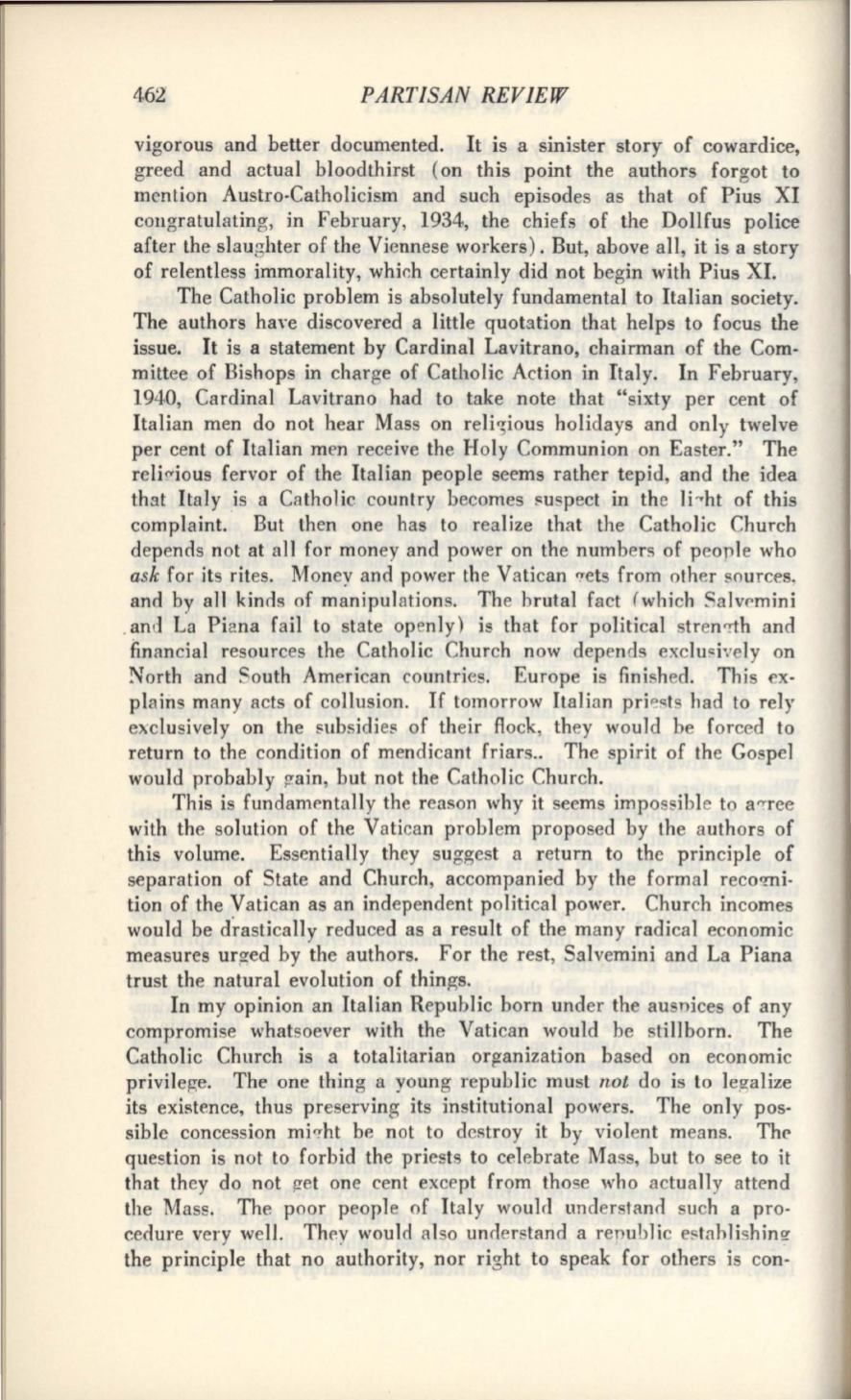
462
PARTISAN REVIEW
vigorous and better documented. It is a sinister story of cowardice,
greed and actual bloodthirst (on this point the authors forgot to
mention Austro-Catholicism and such episodes as that of Pius XI
congratulating, in February, 1934, the chiefs of the Dollfus police
after the slaughter of the Viennese workers). But, above all, it is a story
of relentless immorality, which certainly did not begin with Pius XI.
The Catholic problem is absolutely fundamental to Italian society.
The authors haYe discovered a little quotation that helps to focus the
issue. It is a statement by Cardinal Lavitrano, chairman of the Com–
mittee of Bishops in charge of Catholic Action in Italy. In February,
1940, Cardinal Lavitrano had to take note that "sixty per cent of
Italian men do not hear Mass on
reli~ious
holidays and only twelve
per cent of Italian men receive the Holy Communion on Easter." The
relio-ious fervor of the Italian people seems rather tepid, and the idea
that Italy is a Catholic country becomes
~uspect
in the
li~ht
of this
complaint. But then one has to realize that the Catholic Church
depends not at all for money and power on the numbers of people who
ask
for its rites. Money and power the Vatican '!ets from other sources.
and by all kinds of manipulations. The brutal fact (which Salvcmini
.and La Piana fail to state openly) is that for political stren'!th and
financial resources the Catholic Church now depends
exclu~ively
on
North and South American countries. Europe is finished. This ex–
plains many acts of collusion.
If
tomorrow Italian
pri ~sts
had to rely
exclusively on the subsidies of their flock, they would be forced to
return to the condition of mendicant friars.. The spirit of the Gospel
would probably
~ain,
but not the Catholic Church.
This is fundamentally the reason why it seems impossible to a•rree
with the solution of the Vatican problem proposed by the authors of
this volume. Essentially they suggest a return to the principle of
separation of State and Church, accompanied by the formal reco<mi–
tion of the Vatican as an independent political power. Church incomes
would be
d~astically
reduced as a result of the many radical economic
measures urged by the authors. For the rest, Salvemini and La Piana
trust the natural evolution of things.
In my opinion an Italian Republic born under the ausnices of any
compromise whatsoever with the Vatican would be stillborn. The
Catholic Church is a totalitarian organization based on economic
privilege. The one thing a young republic must
not
do is to legalize
its existence, thus preserving its institutional powers. The only pos–
sible concession mi'!ht be not to destroy it by violent means. The
question is not to forbid the priests to celebrate Mass, but to see to it
that they do not l!et one cent except from those who actually attend
the Mass. The poor people of Italy would understand such a pro–
cedure very well. Thev would also unclerstand a republic estahlishin!!'
the principle that no authority, nor right to speak for others is con-


